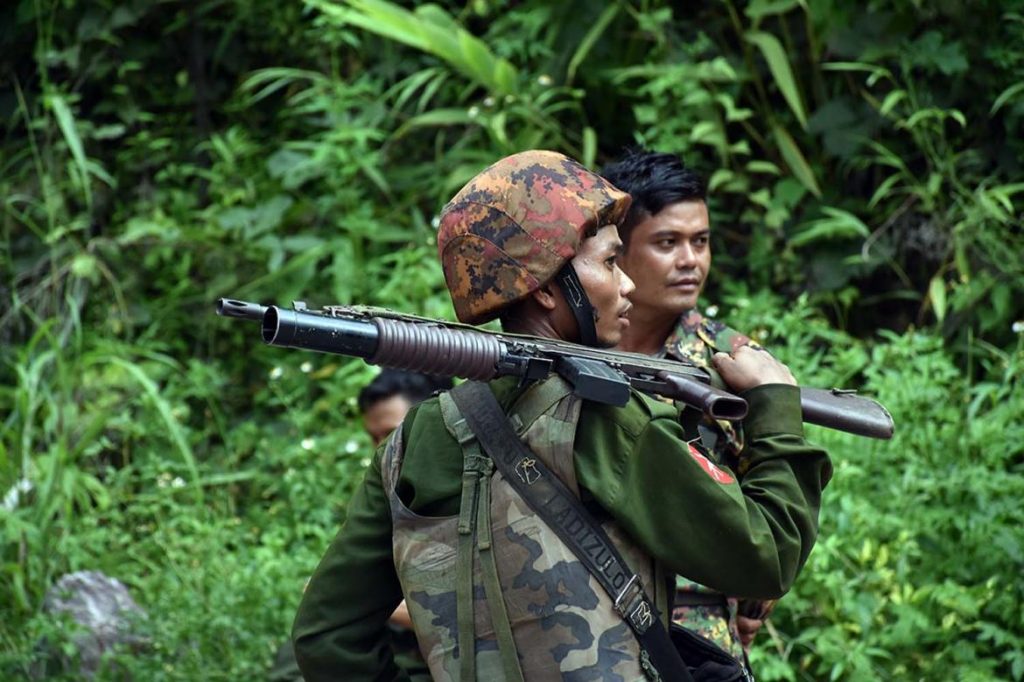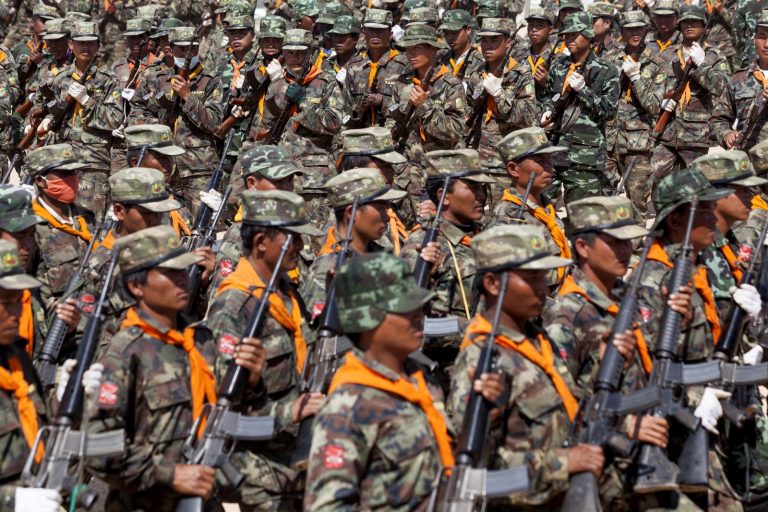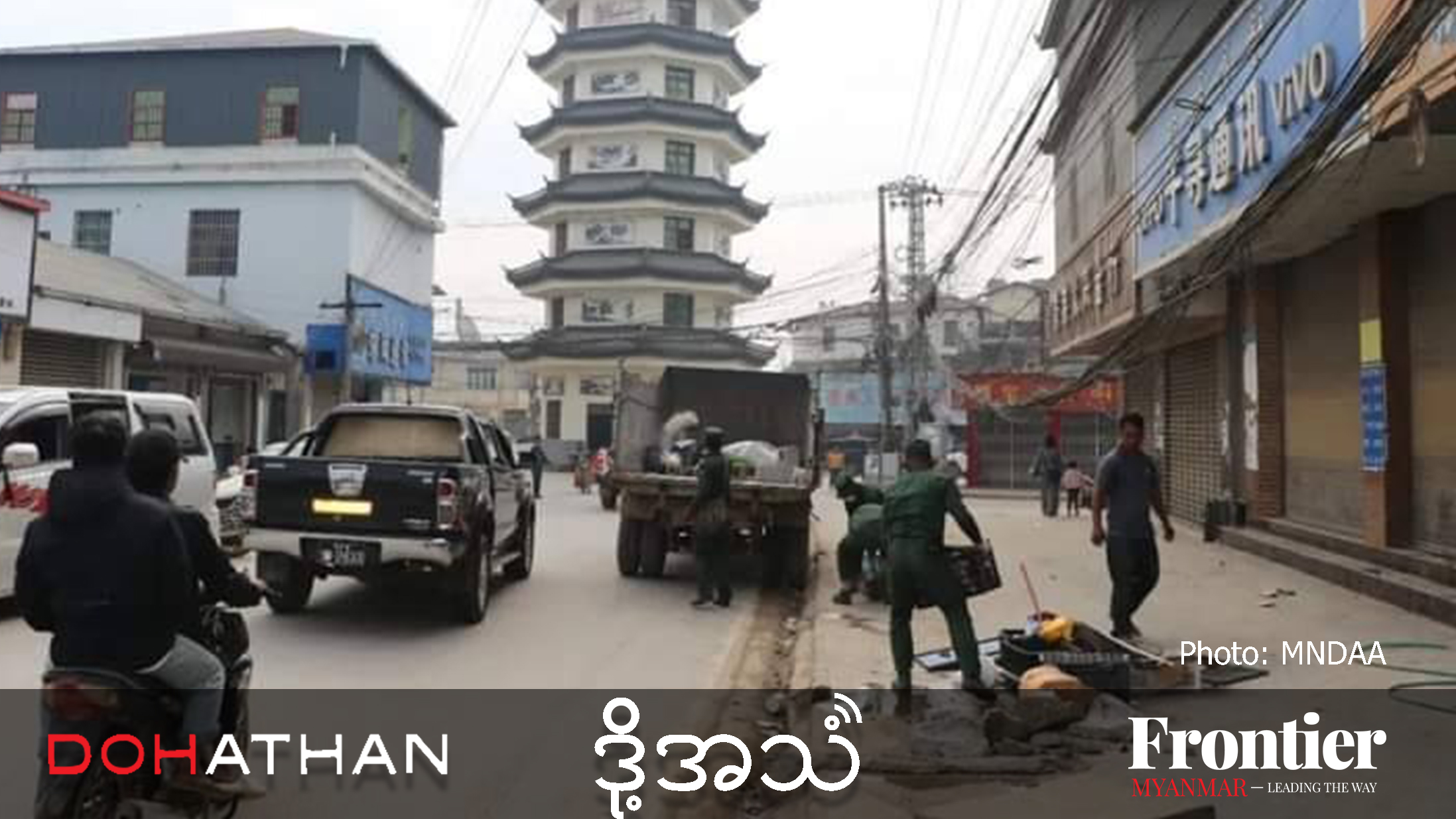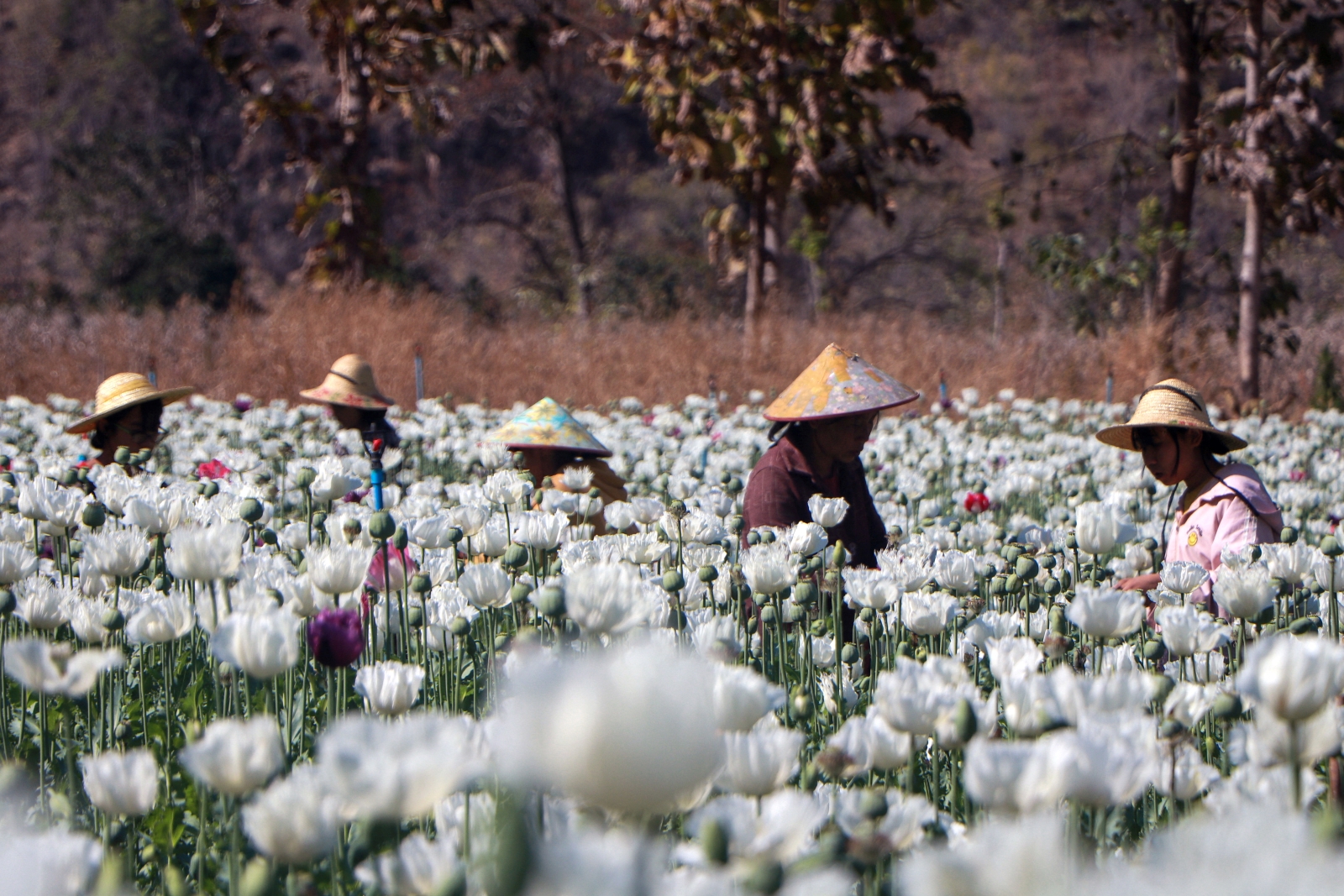Differences between the Tatmadaw and the three Northern Alliance allies behind recent brazen attacks in the north must be overcome for peace to have a chance.
By SITHU AUNG MYINT | FRONTIER
THE BOLD attacks by three members of the Northern Alliance on Tatmadaw, infrastructure and other targets in northern Shan State and neighbouring Mandalay Region since August 15 have shocked the nation.
They included an audacious attack on the Defence Services Technological Academy in Mandalay’s Pyin Oo Lwin Township, one of the nation’s most heavily fortified towns. The academy was one of five targets hit in a coordinated dawn operation on August 15 that included a police post on the Goktwin bridge in northern Shan’s Nawngkhio Township, a toll gate, narcotics checkpoint, and a bridge on the road linking Mandalay, Lashio and Muse, disrupting border trade with China.
The three groups, the Ta’ang National Liberation Army, Myanmar National Democratic Alliance Army and Arakan Army, have since struck at other targets in northern Shan and the fighting has displaced thousands of villagers.
The fighting involving the three groups, all non-signatories of the Nationwide Ceasefire Agreement, has again focused attention on their differences with the Tatmadaw and the challenges facing the peace process.
Support more independent journalism like this. Sign up to be a Frontier member.
The National League for Democracy government and the Tatmadaw are dealing with three categories of ethnic armed groups, depending on what agreements they have signed, or in some cases, not signed.
The first are the ten ethnic armed groups that have signed the NCA. They include the Karen National Union, which has suspended its involvement in the peace process, a situation that needs to be resolved before peace talks can move forward.
Second are the groups that have signed bilateral ceasefires but are resisting signing the NCA. They are the United Wa State Army, armed wing of the United Wa State Party; the Mongla-based National Democratic Alliance Army; the Shan State Army-North, armed wing of the Shan State Progress Party; and the Karenni National Progressive Party and its armed wing, the Karenni Army.
In the third category are the groups that have never signed bilateral ceasefires, such as the TNLA and AA. This category includes the Kachin Independence Army, which signed a bilateral ceasefire with the Tatmadaw in 1994 that collapsed in 2011.
The NCA was initially signed by eight groups in October 2015 and was an important achievement of the Union Solidarity and Development Party government in moving the peace process forward. However, at the insistence of the Tatmadaw, the AA, MNDAA and TNLA were not permitted to participate in the negotiations that led to the signing of the NCA. The ostracism of the three groups had a flow-on effect, because it resulted in other organisations declining to sign the NCA, including the KIA, one of the biggest ethnic armed groups.
The AA, armed wing of the United League of Arakan, was established in 2008 at KIA headquarters at Laiza in Kachin State. The AA’s predecessor, the Arakan Liberation Army of the Arakan Liberation Party, was formed in 1968 and signed a bilateral ceasefire with the military government.
The TNLA had similar beginnings. It emerged in 1992 to replace the Palaung State Liberation Organization and its armed wing, the Palaung State Liberation Army, which signed a bilateral ceasefire in 1991 and surrendered to the Tatmadaw in 2005.
The MNDAA signed a ceasefire in 1989 but two decades later was driven from its stronghold in the Kokang region bordering with China because it resisted Tatmadaw pressure to become a Border Guard Force. In early 2015, the MNDAA launched an offensive aimed at regaining control of the Kokang region but was repulsed after months of fighting that caused heavy Tatmadaw casualties. The Tatmadaw therefore holds a grudge against the MNDAA.
Following the signing of the NCA in 2015, the government and the Tatmadaw made a conditional offer to the AA, TNLA and MNDAA. They were asked to issue a statement pledging to stop fighting in return for being able to participate in the NCA, but the three groups rejected the offer.
In a follow-up offer from the government and the Tatamadaw, the three groups were told that they did not have to surrender their weapons but must confine their activities to the territory of an ethnic armed organisation with which they had close relations. This meant, for example, that if the AA agreed to operate only in territory under the KIA’s control, it would be permitted to participate in the NCA.
The response to the offer has been the escalating AA campaign in Rakhine State since late last year and an upsurge of fighting in northern Shan. The three Northern Alliance allies made a counter offer to negotiate bilateral ceasefires with the Tatmadaw. After several rounds of talks, the government proposed a conditional ceasefire agreement, including that the three EAOs must sign on to the NCA within a stipulated time. One of the conditions was that the AA must stay out of Rakhine and must confine its activities to territory under KIA control, which the Northern Alliance trio rejected.
In a fresh bid to encourage the groups to negotiate, the Tatmadaw late last December declared a unilateral ceasefire in five commands in the north of the country, but excluding Rakhine. The ceasefire has been renewed four times and will expire on September 21.
The three-party alliance and other EAOs welcomed the unilateral ceasefire but there was criticism that it did not cover Rakhine, where fighting has continued.
The three EAOs issued a statement warning of negative consequences unless the Tatmadaw halted its operations in Rakhine and in northern Shan, where fighting had continued despite the unilateral ceasefire. But the fighting continued and the three groups responded by launching the attacks on August 15.
The Tatmadaw’s attitude towards the three EAOs has had significant consequences for the peace process. Many have wondered why the Tatmadaw permitted some small EAOs to sign the NCA, but hesitated to recognise or allow bigger groups, such as the TNLA, MNDAA and AA, to ink the accord.
The Tatmadaw needs to review its discriminatory approach towards the three Northern Alliance allies because the continued fighting can only lead to a hardening of attitudes that will not help the quest to bring lasting peace to Myanmar.







